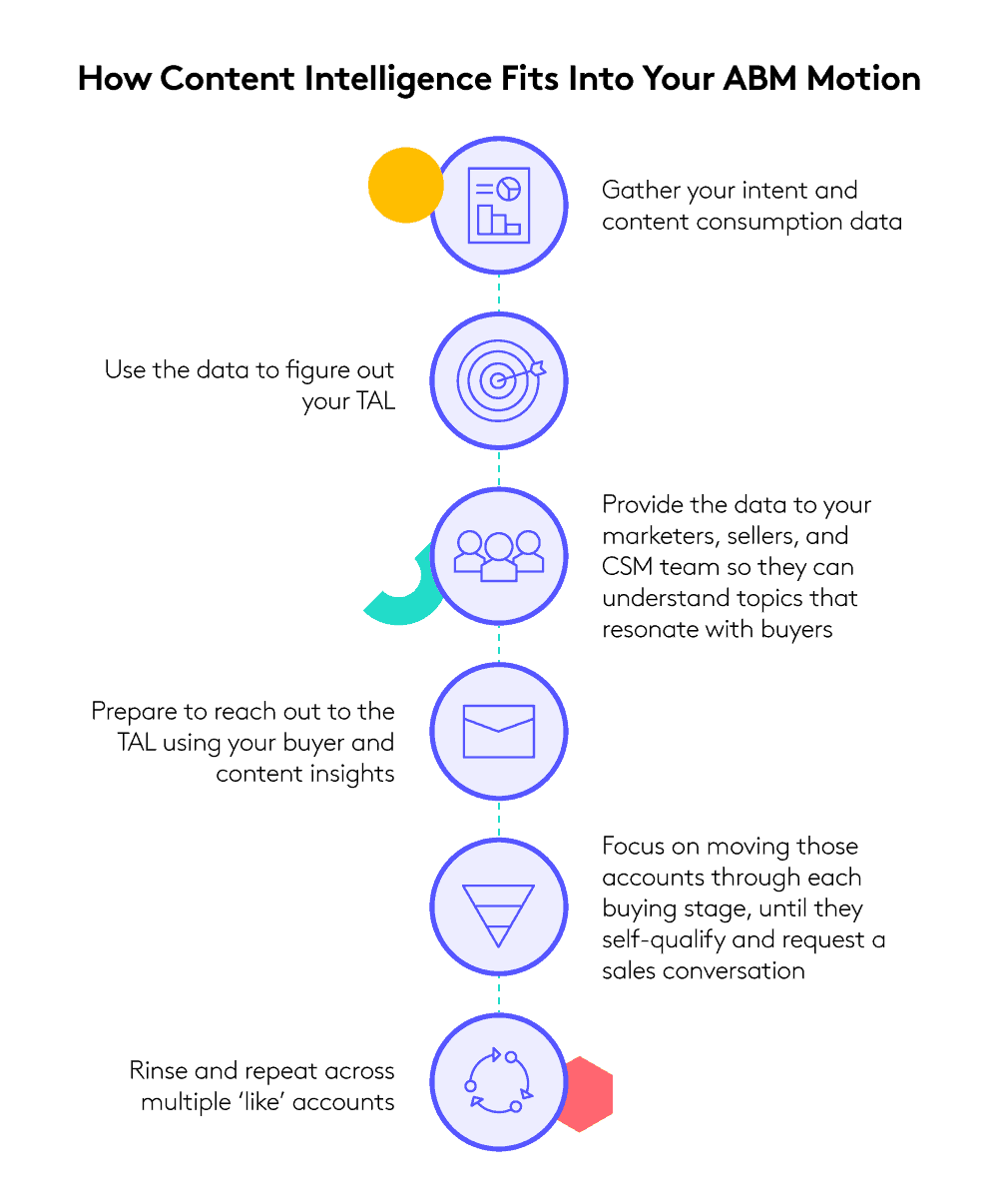Aligning Your Go-To-Market Teams: Why Is It So Freakin’ Hard? – Chapter 4
ABM
With Account-Based Marketing (ABM), your target account list (TAL) is everything. A lot of thought, analysis and planning goes into developing a TAL, and it requires input from your entire go-to-market team. Are your marketing, sales, and customer success teams on the same page when it comes to all the details that go into account outreach?


ABM is not meant to be a one size fits all approach, nor is it meant to be done at the same scale as demand generation programs. How do you leverage content intelligence and revenue intelligence to really nail ABM? It’s all in the approach (and the data, of course!)

ABM has ushered in a new way to approach targeting customers. Hubspot reported that in 2021 70% of marketers reported using ABM, which was up from 15% in 2020, but recent studies from eMarketer showed only 17% of B2B marketers worldwide said their ABM program was mature and driving strategic growth, so it’s clear that there is room to improve. Why? Well one factor is the ability to holistically involve your entire GTM team.
Implementing a ABM strategy can help your company:
Focus your marketing efforts on accounts that already show intent to purchase
Start sales outreach earlier in the buying process
Maximize the ROI from marketing campaigns
Continue to work towards stronger sales and marketing alignment

By moving to an account-based approach, you’re giving yourself a competitive advantage, and developing key pieces of your go-to-market strategy like target account lists, high value offers, or ideal customer personas. On top of that, using account-based methods makes both marketing and sales stakeholders resulting in further alignment between teams.

By adding content intelligence as part of your ABM strategy, teams are equipped with valuable insights about content engagement and performance (which benefits marketing), and target account behavior (which benefits sales). By using these insights during the buyer journey, you’re keeping your two revenue teams in lockstep with one another.

